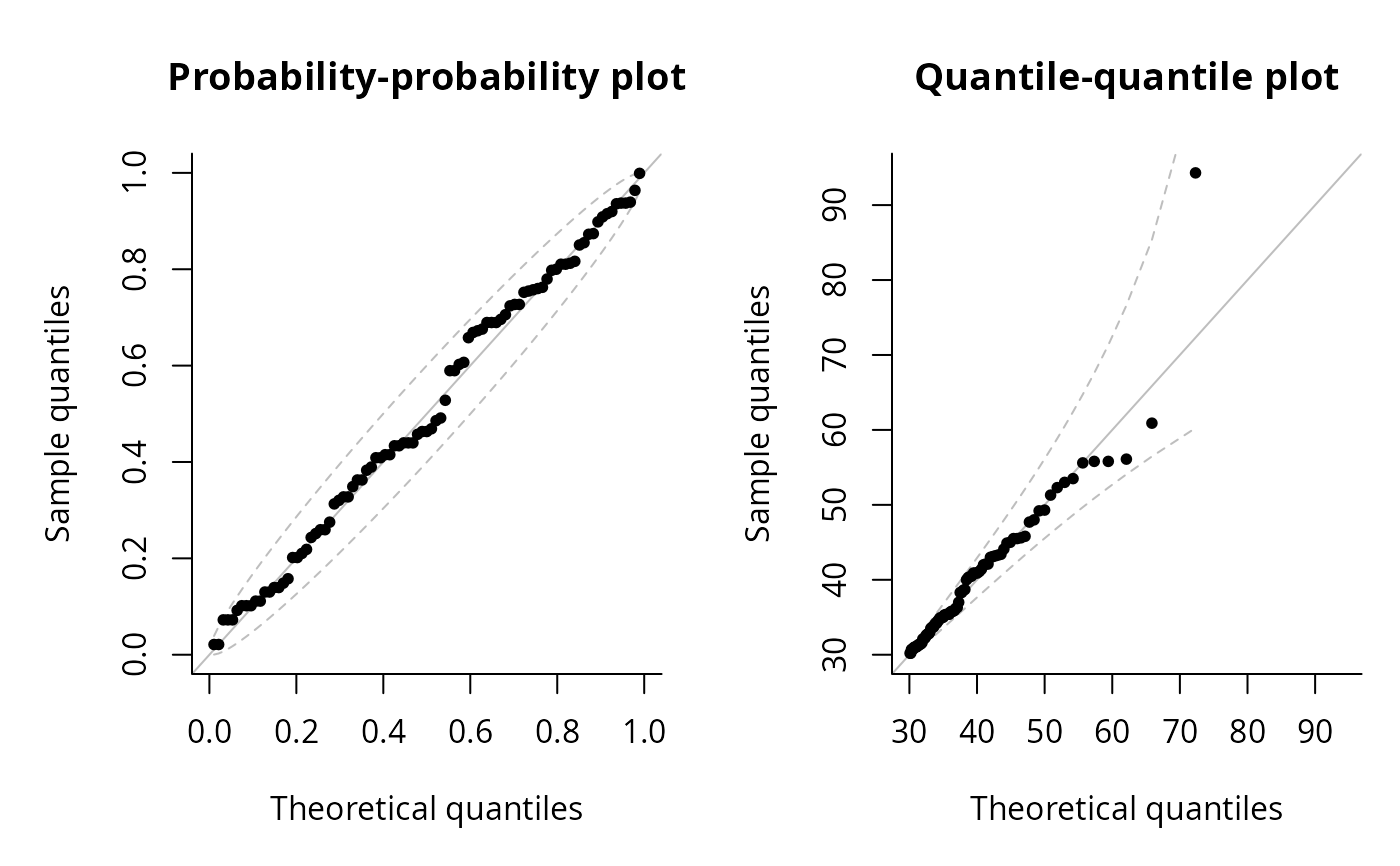Data above threshold is modelled using the limiting point process
of extremes.
Usage
fit.pp(
xdat,
threshold = 0,
npp = 1,
np = NULL,
method = c("nlminb", "BFGS"),
start = NULL,
show = FALSE,
fpar = NULL,
warnSE = FALSE
)Arguments
- xdat
a numeric vector of data to be fitted.
- threshold
the chosen threshold.
- npp
number of observation per period. See Details
- np
number of periods of data, if
xdatonly contains exceedances.- method
the method to be used. See Details. Can be abbreviated.
- start
named list of starting values
- show
logical; if
TRUE(the default), print details of the fit.- fpar
a named list with optional fixed components
loc,scaleandshape- warnSE
logical; if
TRUE, a warning is printed if the standard errors cannot be returned from the observed information matrix when the shape is less than -0.5.
Value
a list containing the following components:
estimatea vector containing all parameters (optimized and fixed).std.erra vector containing the standard errors.vcovthe variance covariance matrix, obtained as the numerical inverse of the observed information matrix.thresholdthe threshold.methodthe method used to fit the parameter. See details.nllhthe negative log-likelihood evaluated at the parameterestimate.natnumber of points lying above the threshold.patproportion of points lying above the threshold.convergencecomponents taken from the list returned byoptim. Values other than0indicate that the algorithm likely did not converge (in particular 1 and 50).countscomponents taken from the list returned byoptim.
Details
The parameter npp controls the frequency of observations.
If data are recorded on a daily basis, using a value of npp = 365.25
yields location and scale parameters that correspond to those of the
generalized extreme value distribution fitted to block maxima.
